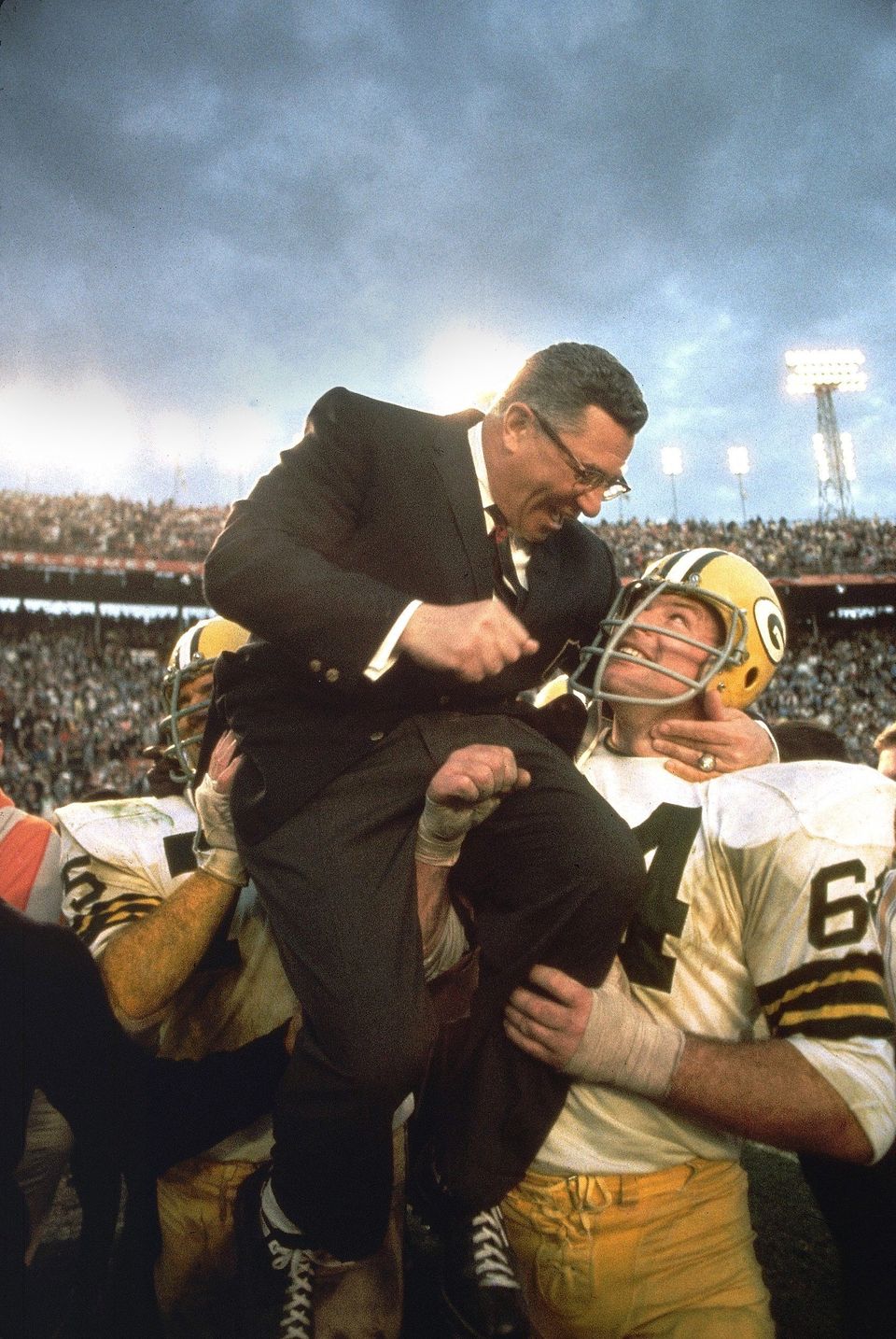
Look no further than the pre-game coin toss if you want to gauge just how much the Super Bowl has evolved -- and sprawled -- in the decades since Vince Lombardi's Green Bay Packers met Hank Stram's Kansas City Chiefs in Los Angeles in 1967 for the inaugural AFL-NFL clash.
When the two captains from those teams met on the field at the L.A. Coliseum they were joined only by referee Nate Schlecter. Surrounding the five men was nothing but green grass. There were no honorary captains, no stage hands disassembling sets from the elaborate pre-game performance. Not a camera crew could be seen. No contest winner or local dignitary was trotted out for a ceremonial coin toss or to be presented with an oversized check. There was no ceremonial anything because the moment was quite simply a coin toss. There was no pomp, just the practical circumstance of one official tossing a coin in front of four players to determine which team kicked off.
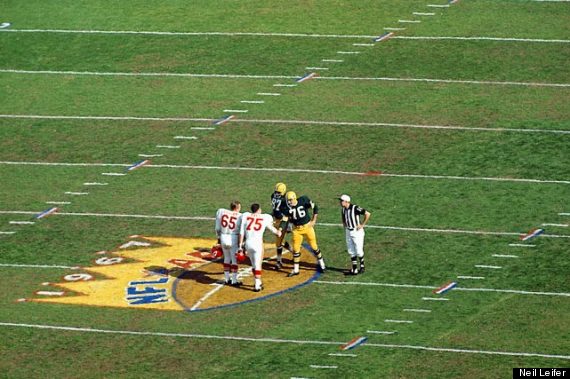
From high in the stands at the L.A. Coliseum, photographer Neil Leifer captured the quiet utility of this moment in one of his iconic images from the early years of the Super Bowl. A photo prodigy who picked up the craft during his youth in the low income housing projects just below Delancey Street in Lower Manhattan during the 1950s, Leifer made his name shooting the frigid final moments of the 1958 NFL Championship at Yankee Stadium while still in his teens. Less than a decade later, he was working for Sports Illustrated and perched above Super Bowl I in Los Angeles.
While Leifer's arresting images of boxer Muhammad Ali would be perhaps his most well known during a lengthy career with SI and later Time, his body of work stretches across virtually every sport and well beyond the field of play. At age 70, Leifer is more apt to be found watching the Super Bowl on television than executing yet another elaborate -- and inspired -- photograph. But the decades' worth of images that he captured during an incredible career continue to define the public's view of figures like Ali, Joe Namath and Jim Brown. As Super Bowl XLVII neared kickoff, a selection of his signature sports photographs could be found on display at theMorrison Hotel Gallery in New York City. The opening of the exhibition marked the gallery's first foray into sports photography.
"I wanted to start with the best photographers in sports. So that's why our first show is Neil Leifer. We did a music show with Ken Regan some years ago, and Neil came to that show and he said, 'Man, I love the way you guys do your thing in music. I would love to do my sports photography [like this],'" recalled Peter Blachley, owner of the Morrison Hotel Gallery, at the opening of an exhibition of Leifer's work. "I said, 'Are you kidding me? Neil Leifer?' Boom! So let's start with Neil. Then we have Walter Ioss, and we have Michel Zagaris. The Z Man came from the 49ers and Ken Regan who did some wonderful sports stuff. So, we're really starting to build the Sports line very much like Music. I'm really not looking for collectables, I'm looking for the most iconic, great memorable sports photographs done over the years."
Shortly after the opening of the exhibition in his hometown, Leifer spared a few minutes to talk with HuffPost Sports about the Super Bowl, what makes an iconic image and the mission of an SI photographer.
HuffPost Sports: What initially attracted you to photography?
Neil Leifer: "I started taking pictures as a teenager, probably 12- or 13-years-old. There was a camera club at the Henry Street settlement. It's kind of interesting how important a good teacher could be because to me it was just something to do on a Monday and Thursday night (or Wednesday or Friday or whatever it was). But the woman who taught the club was a Polish lady named Nelly (with a last name that I'm not even going to try and pronounce). She just made it so much fun that kids like me got hooked on the idea of taking pictures and having a darkroom and processing them and making enlargements out of them and you did that two days a week. After a couple of years, when I was in high school, I was trying out for the high school newspaper. Then I became the picture editor of the high school newspaper."
HP Sports: Where you thinking about a career in photography yet?
NL: "I had no idea that one could make a living in photography. I was a good student so my parents said I would be doctor or lawyer one day. [My mother was] a little, old Jewish mother, you know? She'd never ... 'How are you going to make a living?' My father called photography "a rich man's hobby." He was a postal employee. They wanted to see me go on to college and make something of my life."
HP Sports: How did you end up photographing the New York Giants and eventually find your way to the 1958 NFL Championship?
NL: "Originally, I was a Giants fan. But I couldn't afford a ticket to the Giants games and I could never have gotten close to the field even if I could afford a ticket. I also only had a cheap little camera that didn't have a telephoto lens where I could bring the action in close. But I found out early in the season in 1958 that every single Sunday if you waited outside where the visitors' bullpen is -- in those days remember, stadiums weren't built to be handicapped friendly and you didn't have to have a ramp for wheelchairs and there were none -- these buses would show up every Sunday from an Army veterans' hospital in the Bronx, probably Korean War veterans [as] this was 1958. They would usually bring, depending on the date, 30, 40 sometimes 50 veterans in wheelchairs and they always needed help. They never had 50 people to push them in, they only had a half dozen people for all the buses or eight people. I would volunteer along with other guys that you'd see. So, you would wheel the wheelchairs down the vistors' bullpen ramp and they would line up in left field from the bullpen right out to where the monuments were with these wheelchairs."
HP Sports: And this is where you were for the 1958 NFL Championship between the Giants and the Colts?
NL: After people wheeled the veterans in, once they were in the stadium, they'd disappear because it was the worst place to see a game from. But me, I was thrilled. I mean, I was right there in the end zone and when Ameche scored that touchdown it happened right in our end zone. By that point, there were so many dunken Colts fans on the field that the security people had much more to worry about than me and nobody bothered me. I ended up exactly 10 yards in front of Ameche. And, of course, not having a good camera that could've brought in the action close, I got a wide shot that sort of took the whole scene in and it was much better than any picture I wouldve ever have taken had I had better equipment."
HP Sports: How did you get your start selling your work?
NL: "Little by little, I began showing my pictures to publications, mainly the one-shot publications that did previews to the season, baseball football basketball etc. I loved taking pictures. I was a fanatical sports fan and the idea of getting paid to do something you like to do is quite appealing. Again, I still never expected to make a career out of it, I mean what 15- or 16-year-old thinks of a career? I certainly didn't and it just mushroomed into something. I've gotten very lucky and had a wonderful, wonderful time. I loved being a photojournalist. I had a great run at Sports Illustrated, which is obviously the pictures I'm best known for. But I spent 12 years at Time magazine doing everything from the Pope to Charles Manson and I loved doing that. So, I had a good run."
HP Sports: Was there a pivotal moment when you had to make a choice between photography and some other career path?
NL: "No, not really. No. You know, for starters it was very, very different world then and once the opportunity presented itself I capitalized on it. I say that, meaning that there were far more places to apply your trade. You don't remember [but] there was a weekly Life magazine, there was a weekly Saturday Evening Post, bi-weekly magazines. Sports Illustrated had just begun and there were far more places to try to sell pictures too and far fewer photographers. Today, there are kids coming out of college with degrees in photography that are wonderful photographers. I mean, there are some really good young photographers and far fewer places to get a job. In those days, the opportunity presented itself when it presented itself and I was able to capitalize on it. It was pretty clear to me. I never really gave it any thought. The idea that someone would pay to send me to the World Series and give me the best seat in the house was a joke! I got really excited about boxing early on and the idea that someone would give you the seat on the apron right on the ring and pay you to do something you enjoy doing? I mean, it never looked like a job to me. It hardly looked like work. All through my career I had that attitude quite frankly. And I worked very hard, I had to work hard, so I don't mean this came easily. But the work was fun and that's pretty lucky if you can do something that you enjoy doing."
HP Sports: Your career flourished right along with the NFL and the Super Bowl. How has the game evolved since you captured the coin toss in 1967?
NL: "When I shot that picture that was the coin toss for the first Super Bowl there was a referee, two captains from the Green Bay packers -- the offensive captain and the defensive captain -- and two captains from the Kansas City Chiefs. [There were] five people smack in the middle for the coin toss. There was no NFL Films crew. There was no CBS television crew, NBC television crew. Nobody stopped anybody from being out there. It looks like a small high school football game when you look at that picture. Now in 2005, the last Super Bowl I attended, I went back to do the same thing. In 2005, I shot the same angle. What I did was simply I tried to match that photograph. I had the same focal lens then and angle. I was up high enough although one was taken in the L.A. Coliseum and one was taken in Jacksonville. But I got the same exact angle. I mean, I studied the picture. I knew where to shoot from and took the coin toss and I think there were between 70 and 100 people in the center of the field for the coin toss. There were honorary captains and co-captains, all the referees during the game and there were at least two or three NFL Films crews and each was a crew of three people. Probably there were two or three television crews. There were still photographers. There were cheerleaders. There were mascots. I mean, there were somewhere between 70 and 100 people. I dont remember but I counted it at one point from my photograph. That's just how the game was changed. Don't forget, there were empty seats in the L.A. Coliseum, lots of them. Today, try to buy a ticket. Then, you just walked up to the ticket booth and bought a ticket. And it wasn't expensive either."
HP Sports: Whether it was the caked mud or the unrehearsed postures between plays, your football photos had a certain grit that seems to have been sanitized from the game. How are the aesthetics of the game different these days?
NL: "The idea that players in the fourth quarter looked like they've been in a football game [has changed]. Even if it were a sunny day and it didn't rain and there was no mud, by the fourth quarter Jimmy Brown was running in the mud. I'll never forget those moments. It was a common occurrence by the fourth quarter you [looked like] you were in a football game.
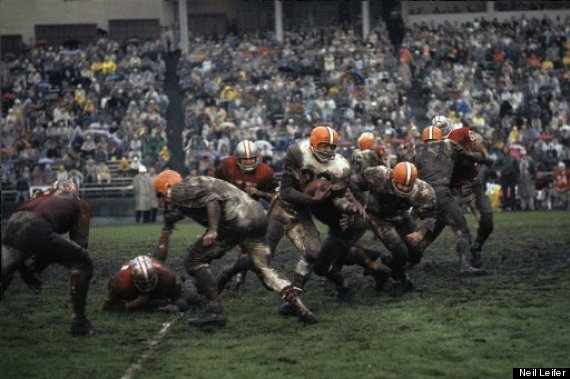
Today, you're getting the Super Bowl which is being played indoors. But even the outdoor games, players at the end of the game look exactly like the first quarter. It just had a grit to it, as you put it, that automatically makes the pictures look better. To say nothing of the guys today with almost armor, arm guards and the face masks. Look at Ray Lewis. You can't see him with the face mask. He might as well have his whole head covered."
HP Sports: While Ali is your most famous boxing subject was there any particular football player who you felt photographed particularly well? How about Namath and that iconic image of him covered in mud on the sideline?
NL: "No. Listen, the bigger the stars the more relevant or the more important the pictures become. You can take Joe Namath in the mud and take Ali standing over Liston, were both of those pictures exaclty almost tracings of 8th-string players, players you know nothing about or if it were somebody in the preliminaries same exact quality photograph standing over a fallen opponent, who'd remember those pictures? So, realistically it isn't me. The picture didn't become famous because of me. it became famous because in the least case it's the way people want to remember Ali. In Joe's case, in Namath's case, he looked like a football player. You got a player looking like he's been in a game. He looks strong in the picture, he looks great, obviously totally ignoring the fact that he's covered head to toe in mud. You know, [he's] comfortable. Football players just ignore that and go on and there he is he is on the phone trying to talk to his coaches in the press box, or his girlfriend, whichever. If it weren't Joe Namath it'd still be a very good picture, but I promise you people wouldn't be oohing and ahhing about it."
HP Sports: All modesty aside, you did put plenty of work into setting up your shots and looking for unique perspectives on sporting events -- like the Ali-Williams photo. What pushed you to develop such an innovative style?
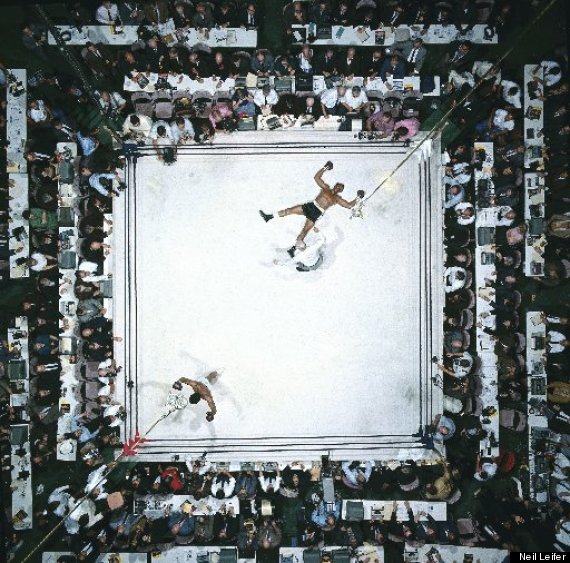
NL: Well, that was our job. I'll tell you that's what I think the mission of a Sports Illustrated photographer is, or a Life magazine photographer is. If you were, and I was, a rabid sports fan in those days, people got their Sports Illustrated on Thursday. Nobody got it earlier than Thursday and most people got it on Friday. And, you know, I have always had a very high respect for the other photographers that were working. So while Sports Illustrated and Life magazine may have been considered the best work, whether it was John Zimmerman or Heinz Kluetmeier or Walter Iooss or Manny Millan. The very best photographers were working at these magazines but let me tell you, the guys working in the newspapers whether they were the New York Daily News or the L.A. Times or the Miami Herald -- some of the better newspapers in terms of photography -- they were damn good. When you had a game .. Or, let's make this an early one: The Kentucky Derby was raced on Saturday. On Sunday morning in every newspaper -- and, in fact, in those days there were newspapers in the afternoon -- you've got great pictures. You have the under the wire finish in the Derby. You had some great picture taking at the head of the stretch, two horses battling to get the lead. You may have a great picture of the jockey standing up at the finish. All of those pictures would appear in all the good newspapers, beautifully.
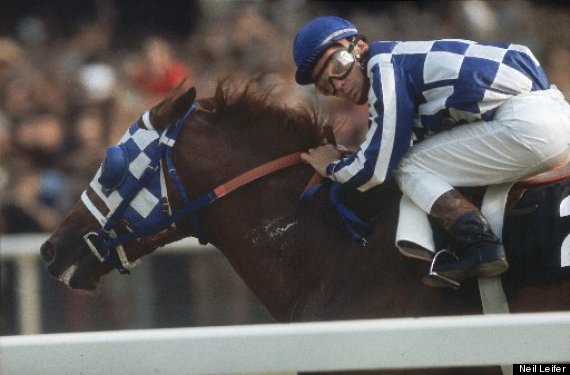
Now, in the '60s we had a little bit of an edge at SI because we were beginning to do things in color and newspapers in America were 100% black and white. OK, so there was a small advantage and, of course, most people didn't have color televisions. In fact, most sports weren't televised in color. By the time you got into the '70s and the '80s that had changed. But even back then the point was if you're a sports fan then on Sunday morning you saw the best pictures in the Derby that the newspapers could publish. On Monday, they did a recap, they were sort of analzying what happened or whatever. [It was the] same on Tuesday morning. By Wednesday, maybe they were doing one last look. By Thursday and certainly by Friday people were looking for next week's race. They were talking about the Preakness. Why the hell would you want to wait for the Sports Illustrated if we did the same pictures? So the mission required you to think out of the box.
By the way, that goes for the writers as well. That's why Dan jenkins or George Plimpton or Mark Kram or any of the great SI writers -- or Rick Reilly later on -- were so special. If you could read the same stories -- I mean the writers writing sports in the newspapers, they were good writers -- why would you care about spending money on a magazine five days later to read news that you read four days earlier? There's no reason and you already saw the pictures. So our job really was exactly as I said for the writers. You get somebody like Dan Jenkins writing college football or golf and he was worth waiting for. [Same goes for] Mark cram writing boxing, or George Plimpton writing almost anything he wrote. The whole idea, the whole participatory sport thing that George Plimpton developed, that was worth waiting for because you didn't see that in the newspaper you were reading. And I hope that some of the pictures that I took, you hadn't seen that from the events, whether it was Ali-Williams from the gondola from the Astrodome or some picture from the Kentucky Derby."
HP Sports: How did photographing football compare to other sports?
NL: With football, the challenge is not having a clue what's going to happen. For example, in baseball when you get a good pitchers' duel -- two pitchers are out there throwing one-hitters or two-hitters -- what happens? You fall asleep once you've shot a picture for two innings. What are you going to do? Now, you do know if there's going to be a play at the plate that you can't miss it or a double play with the runner sliding spikes high and the second baseman or the shortstop leaping. In football, you have no idea when the pictures going to happen and every play is kind of fun. There's no such thing as a pitchers' duel in football. The most boring football game in terms of the score potentially has a good photograph on every single play. It could be a game where nothing happens in terms of a great touchdown but every time a quarterback hands off and somebody runs into the line you've got the potential for a hell of a good picture. [It's the] same thing every time a pass is thrown and two guys are leaping up for it, with a defender trying to intercept it. It's potentially a good photograph. Football is just challenging. It's like a game of chess. No. 1 you want to be in the right spot and No. 2 you want to guess whats going to happen."
HP Sports: Do you still get out and work these days?
NL: "I'm not shooting today. I'm making films and I really just shoot for fun now. Maybe when I'm 75, I'll want to go back and spend the year doing another tour of all the events. That's what I did in 2005. I called it my "Senior Citizen's Tour." Terry McDonnell at SI was nice enough, letting me spend a year shooting all these events."
HP Sports: Is there anything happening in sports today that you'd like to photograph?
NL: "If there were a great heavyweight champion -- if we actually had one fighter who was really the heavyweight champion and he was going to fight. I mean, I love photographing Pacquiao. I've gone to some of the fights. I do that mostly for fun. I'm also doing a boxing book and I wanted to have some current fighters in it, too, I'll go, but I don't take it as seriously. I'll go to the party before the fight. I would have never done anything like that when I was working and I dont lose any sleep if I miss a knockout."
